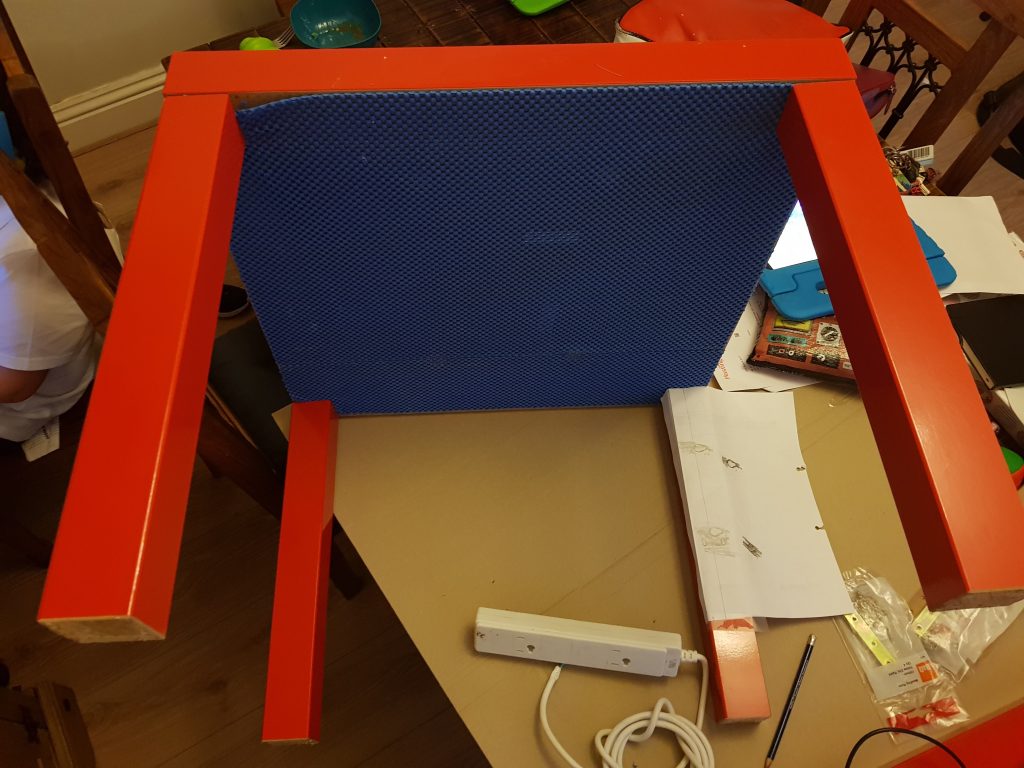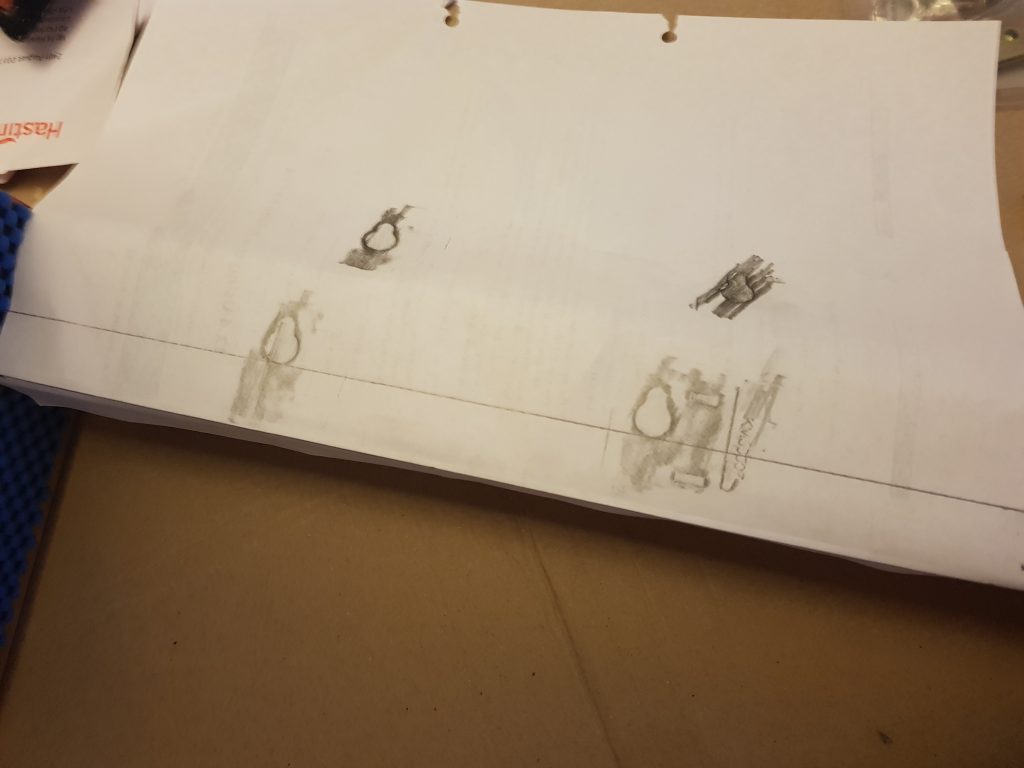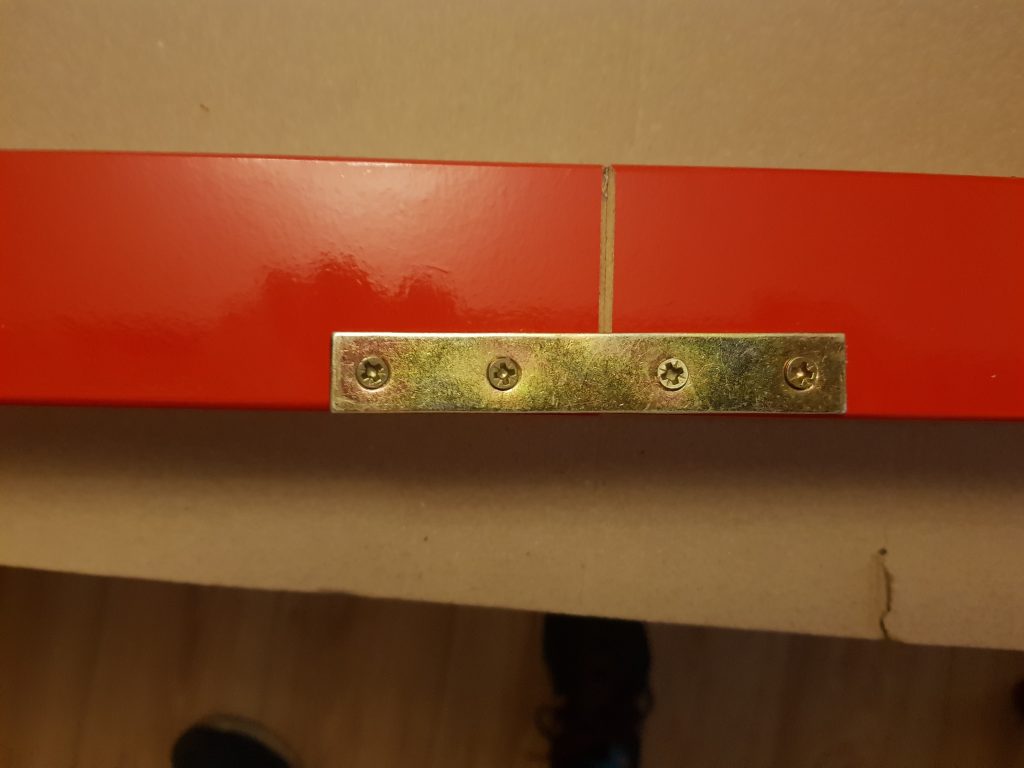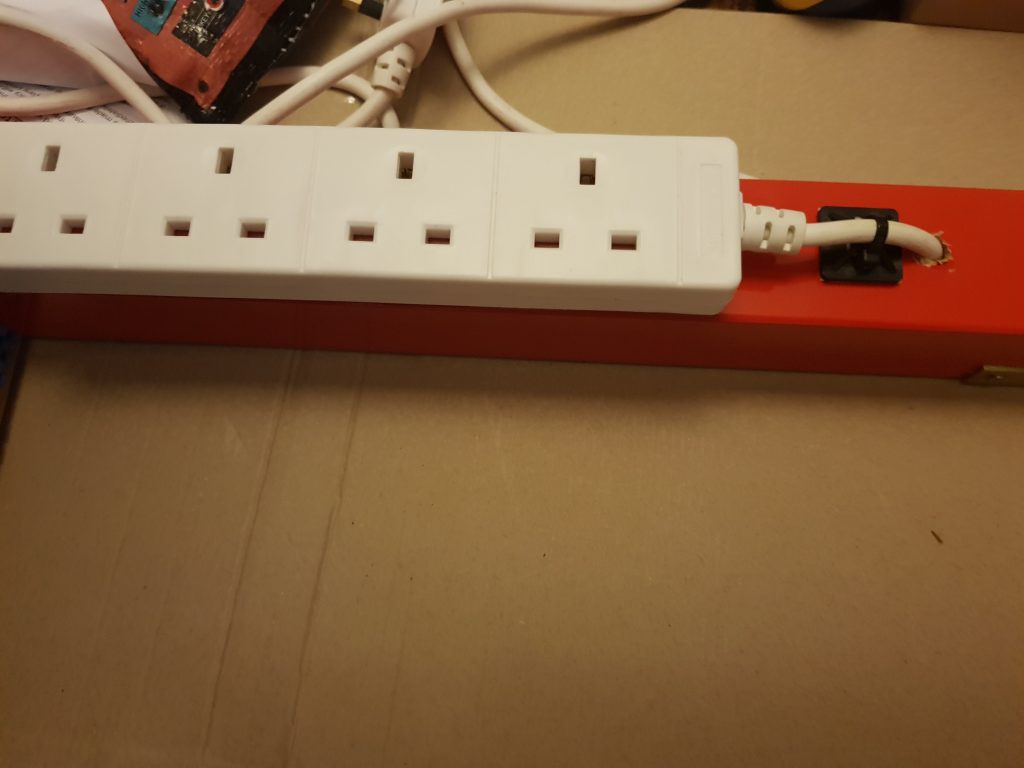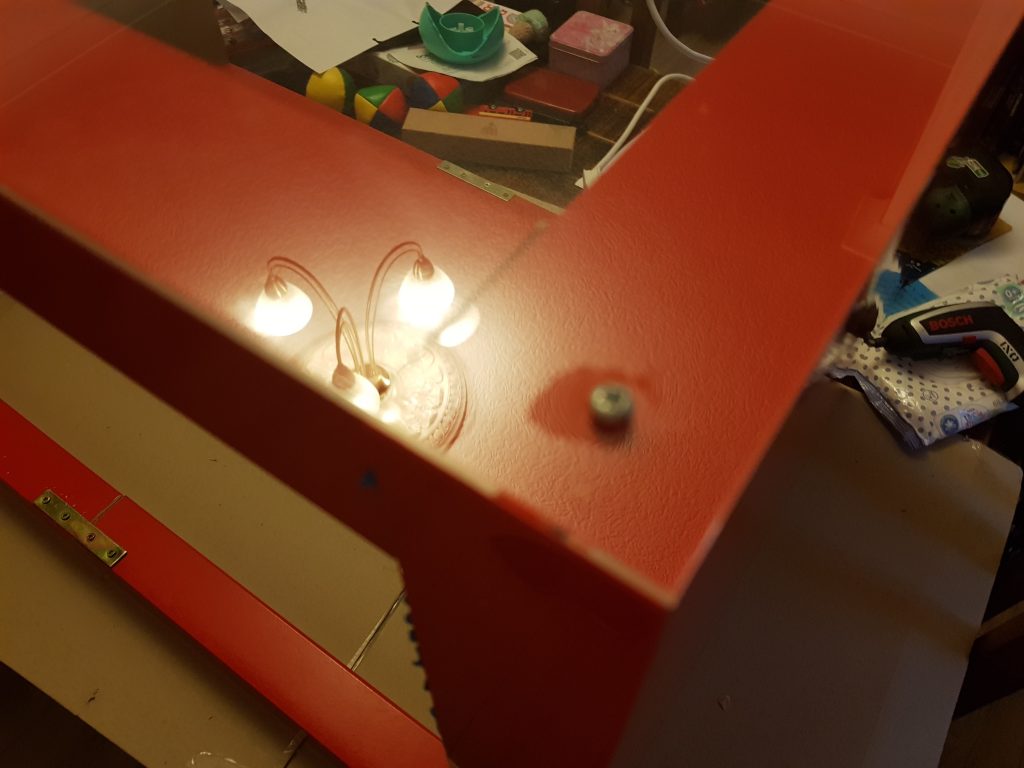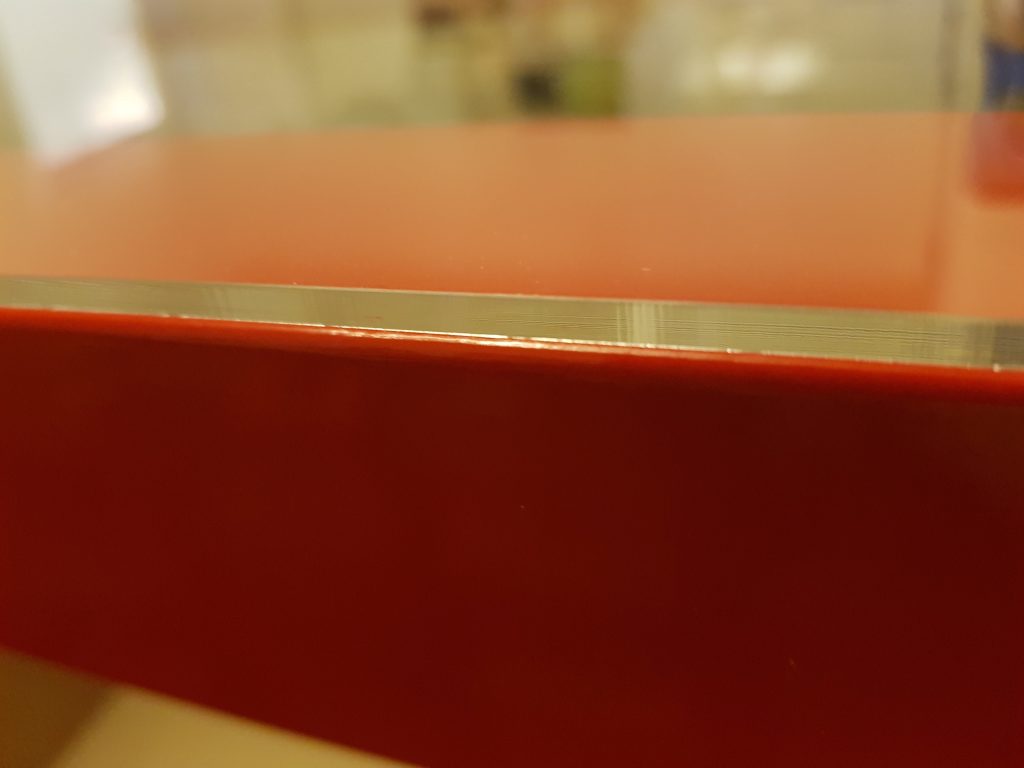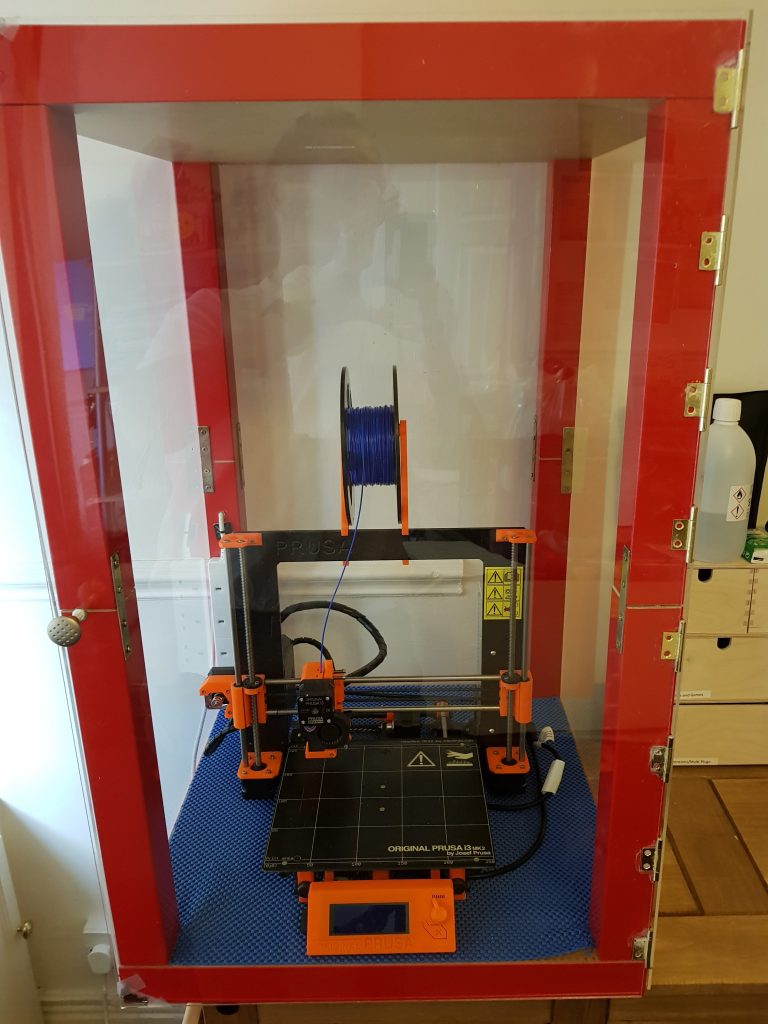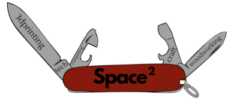I haven’t managed to get to the Space much in the last couple of months (again! – though at least I did my duties as a director, such as making some posters (see another blog to come soon) and attending meetings doing admin etc.) mostly due to summer holidays and the pressures of family life. However home projects haven’t stopped and I have a couple of blogs to talk about what I have been up to on the home front.
The first of these is all about my 3D printing cabinet. I was gifted a 3D printer (Prusa i3 Mk2 that I constructed with the affable TBSliver) detailed in a video to come soon. It has been working well but I often have prints that lift on one side.
After some discussion, with the amiable (and affable and affordable) TBSliver we decided it could be the drafts in the room. So again from a suggestion by the amazing TBSliver I decided to build a cabinet to hold my printer. To do this I used:
- Two tables from IKEA – the well known LACK tables at £5 each (£10)
- Two packs of cabinet hinges from B&Q at £4 each (£8)
- One pack of straight braces from B&Q at £4 (£4)
- One small knob from Wilkinsons (£2)
- Some grip surface – spare piece that I had in my workshop
- Screws, Superglue – all from other projects
- Two magnets recovered from a hard drive that was dismantled
- One 4 bar extension from Wilkinsons (£3)
- Cut sheets of 3mm clear perspex with holes in three pieces for fixing (£60 including all cutting and delivery from the Plastic Man).
- Total cost: £87
This might seem like a high sum, especially the perspex, but they are large sheets at 890mm by 550mm x 4 – and close to £12 for delivery. The actual sheets were £12 or so each and were delivered on time and well cut and transported so a bargain if compared to similar online retailers. I heartily recommend the service.
Construction was simple:
- Glue down some non-slip matting
- Align the two tables and fix together with straight braces (2 on each leg)
- Align the pre-drilled screw holes of the perspex and carefully screw down (do not over-tighten as perspex will crack
- Glue hinges to the perspex door and leave to cure for 24 hours
- Screw door to frame.
- Forget that you need a hole for the knob!**
My only issue is that the tables were a little flimsy and not very accurately made (a <1mm difference in legs from the cut and glazing process) which coupled with some slight inacuracies of the angle of screw holes can give ever so slight deviance in the build. However for £5 it is a small price and easily correctable once we bolted the whole frame together.
The finished box is quite pretty (IMO) and site nicely on the side dresser where I have my specialist tools and electronic knick knacks. in the utility room of the house.
Once again a big thanks to the wonderful chap who is TBSliver for all of his help, advice, support and praise, greatly appreciated. LAMM members are wonderful creatures.
Pictures below.
(** I solved this issue with the careful use of a soldering iron)

